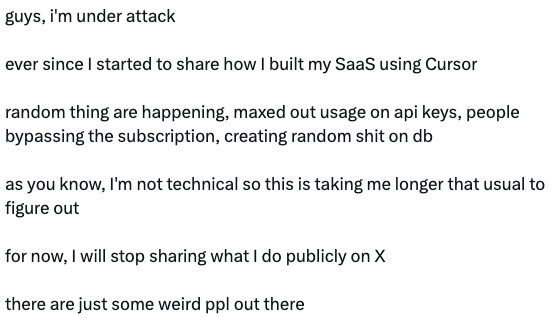
Vibe Coding a Telegram Bot: from idea to a service in a couple of hours
Table of Contents
The Practical Part
After discovering Cursor and the concept of Vibe Coding, I was eager to test it on a greenfield project. I revived an old idea: building a tool to help amateur guitarists (like me) memorize notes on the fretboard in standard tuning (e-A-D-G-B-E).
Firstly, I strongly recommend installing one of the popular vibe coding tools such as Cursor, WindSurf, Loveable. I started with Cursor because it integrates based on VS Code. You can quickly learn how to use the tool through a short tutorial or with a couple of below videos:
In short, the cursor has a few modes to work with, and this thread summarize it very well.
The cursor is quite intuitive, so you’ll grasp it in minutes. However, the way you interact with the tool is slightly different from the usual IDE usage. Here is the algorithm that I leveraged to build my bot:
- In chat mode, I describe a functionality (a feature request, PRD, etc) to the cursor in as many details as I can. Then, I ask if Cursor requires further clarification.
- After the clarifications, I ask Cursor to generate an execution plan with atomic steps like these steps are going to be followed by a junior engineer. Ask not write any code, and ask Cursor to assume that’s the plan is going to be executed by junior engineer.
- My first prompt is: “I want to create a Telegram bot to help users learn the guitar fretboard using Python. The bot should quiz users by displaying a fretboard in ASCII art, with one random note hidden behind a question mark, prompting users to guess. Here’s an example ASCII fretboard generated via ChatGPT: (include actual ASCII example here). DO NOT CODE. Prepare a step-by-step execution plan as it’s going to be implemented by a junior engineer. If code is necessary, use pseudo-code.”
- I save and commit the example at the plan.md file and use it as a context later.
- Then ask Cursor to implement the first step and test it
- If the results look satisfying, push the change in the repo
- Otherwise, explain the problem as clearly as you can and ask Cursor to fix it
- Repeat until done!
Lastly, I used ChatGPT to generate an icon and description, packaged the bot into a container using Cursor, and deployed it via fly.io. The entire build and deployment took around 2–4 hours, with an extra hour spent refining the ASCII fretboard.
The Result
You can try out the bot right now on Telegram - just type @FretBuddyBot to get started.
The project repository: https://github.com/amsilf/FretBuddy
A quick demo:

Best Practices for Efficient Vibe Coding with Cursor
To conclude, a few practical pieces of advices on how to leverage Cursor to ship your ideas with the speed of light:
- Always use version control, even for personal projects, because tools like Cursor can make extensive changes that are hard to track.

- Follow a structured feedback loop (such as the one described above), rather than simply dumping requirements into chat.
- Use a proper .cursorrule file to enhance your development efficiency. I recommend using awesome-cursorrules.
- If you are a seasoned engineer, I assume you have a set of best practices that you would like to follow; it’s the right time to leverage a Cursor’s context to ensure that your code / infra builds according to your accumulated wisdom.

Learn at least fundamentals of LLMs to understand what these tools are capable of. My favorite courses on the topic are:
- Marchine Learning in Production
- Natural Language Processing
- Attention in Transformers
- How transformers work?
- Reasoning with o1
For corporate projects, remember to adapt these practices to meet organizational requirements. This includes ensuring security guardrails are robust, pipelines are performant, LLMs are hosted internally, and DevTools align with your company’s standards.
To conclude, I think vibe coding is the best thing that has happened to the industry in the last 10 years, so I finally can complete all my POCs & ideas.